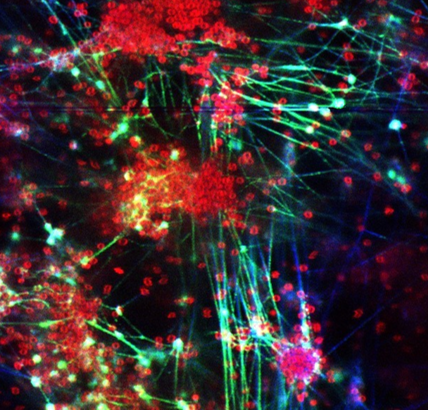Unveiling the Protective Power of Extracellular DNA Structures in Bacterial Biofilms
A collaborative effort between iNANO researchers and Aarhus University Hospital illuminates the mysteries of bacterial biofilms, discovering how non-canonical DNA structures like G-quadruplexes and Z-DNA shield biofilms from DNase I, offering new insights into biofilm resilience.
In a recent study published in Nucleic Acids Research, researchers from the Interdisciplinary Nanoscience Center (iNANO) and Aarhus University Hospital shed light on the intricate defense mechanisms of bacterial biofilms. Spearheaded by Professor Rikke Louise Meyer, Gabriel Antonio Salvador Minero, and a collaborative team including Victoria Birkedal, Daniel Erik Otzen, and researchers from Aarhus University Hospital, the study unveils the presence of non-canonical DNA structures, specifically G-quadruplexes and Z-DNA, within the extracellular matrix of Staphylococcus epidermidis biofilms.
Biofilms, dense communities of bacteria encased in a matrix of polysaccharides, proteins, and extracellular DNA (eDNA), are notorious for their resilience against environmental stresses and immune attacks. However, the role of eDNA and its conformation within biofilms has remained largely elusive until now.
Using innovative techniques including immunolabeling, fluorescence microscopy, and optical coherence tomography, the researchers demonstrated the prevalence of G-quadruplexes and Z-DNA within the biofilm matrix. Interestingly, these structures formed intricate web-like patterns, suggesting a crucial role in biofilm architecture and stability.
Furthermore, the study uncovered the protective function of these non-canonical DNA structures against nucleases. While mammalian DNase I showed little activity against G-quadruplexes and Z-DNA, Micrococcal nuclease, originating from Staphylococcus aureus, demonstrated the ability to degrade these structures. This finding suggests a potential mechanism for biofilm dispersal in staphylococci, highlighting the importance of understanding bacterial defense strategies for developing effective antibiofilm therapies.
Perhaps most intriguingly, the researchers discovered that eDNA within biofilms possesses inherent peroxidase-like activity in the presence of hemin. This revelation challenges conventional knowledge by suggesting that biofilms themselves may possess enzymatic capabilities traditionally associated with host defense mechanisms.
These findings not only deepen our understanding of biofilm biology but also offer promising avenues for the development of novel antibiofilm strategies. By targeting the unique structural and enzymatic features of biofilms, researchers may pave the way for more effective therapies against biofilm-associated infections, ultimately benefiting human health and combating antibiotic resistance.
In the wake of these research results Professor Rikke L. Meyer has been awarded a Semper Ardens grant of 9.97 million DKK for "The Catalytic Network" project. This initiative explores the use of extracellular DNA (eDNA) in bacterial biofilms, unveiling how biofilms form resilient structures with catalytic properties. The project combines microbiology, DNA chemistry, and biophysics to understand the intricacies of bacterial biofilms, offering new insights into the role of DNA in living organisms.
Additionally, a partnership with industry leader Novonesis has been forged, which reflects the potential for translating these discoveries into practical applications.
About the research
Study type:
Experimental Molecular Biology
External funding:
This work was supported by two grants from VILLUM FONDEN (00028321 and 00050284). Funding for open access charge: VILLUM FONDEN (00050284).
Conflicts of interest:
The researchers declare that there are no conflicts of interest in connection with this research.
Link to the scientific article:
Extracellular G-quadruplexes and Z-DNA protect biofilms from DNase I, and G-quadruplexes form a DNAzyme with peroxidase activity
Gabriel Antonio Salvador Minero, Andreas Møllebjerg, Celine Thiesen, Mikkel Illemann Johansen, Nis Pedersen Jørgensen, Victoria Birkedal, Daniel Erik Otzen, Rikke Louise Meyer
Nucleic Acids Research, 2024, 1-16 (January 10, 2024) https://doi.org/10.1093/nar/gkae034
Contact information:
Professor Rikke Louise Meyer
Aarhus University
Interdisciplinary Nanoscience Center
Email: rikke.meyer@inano.au.dk
